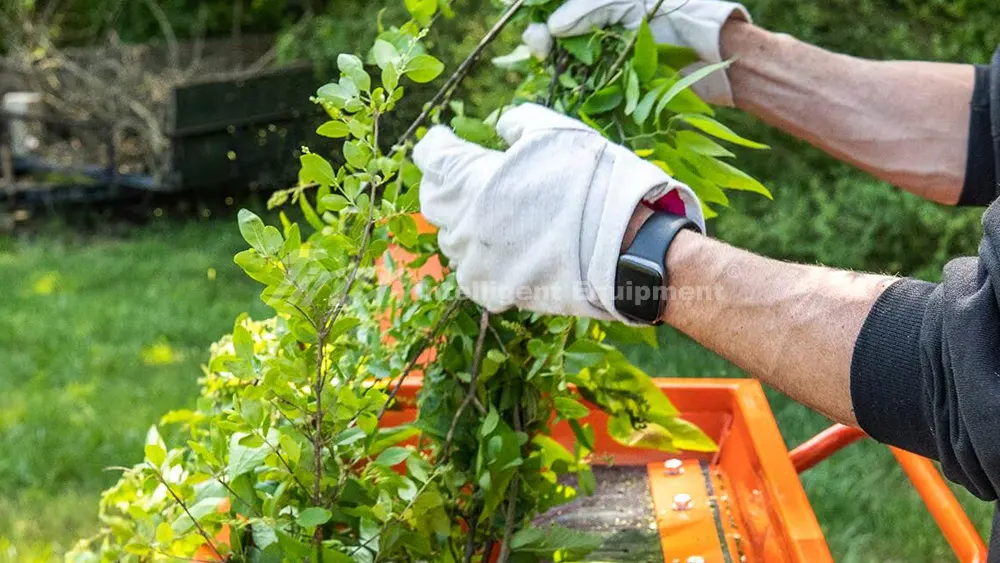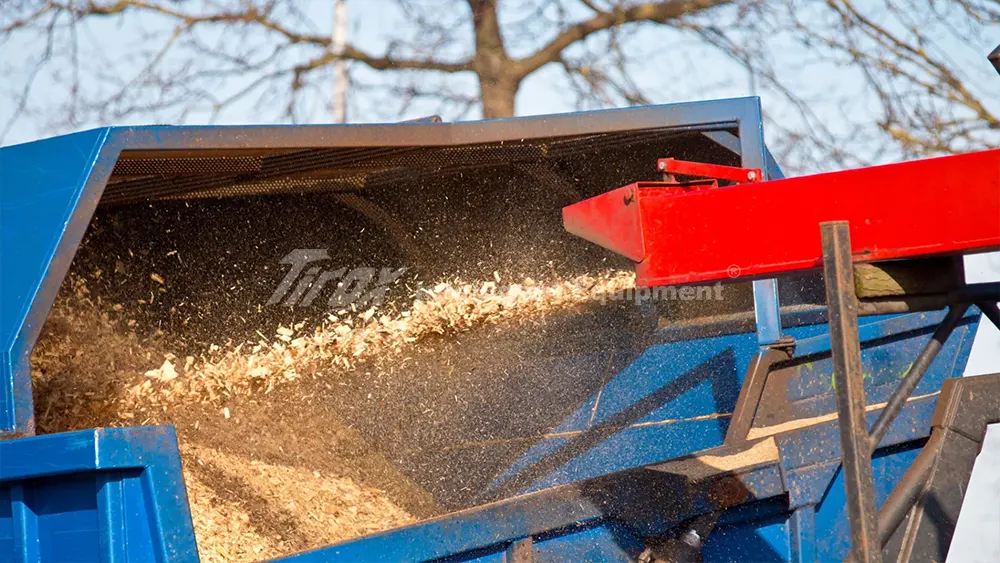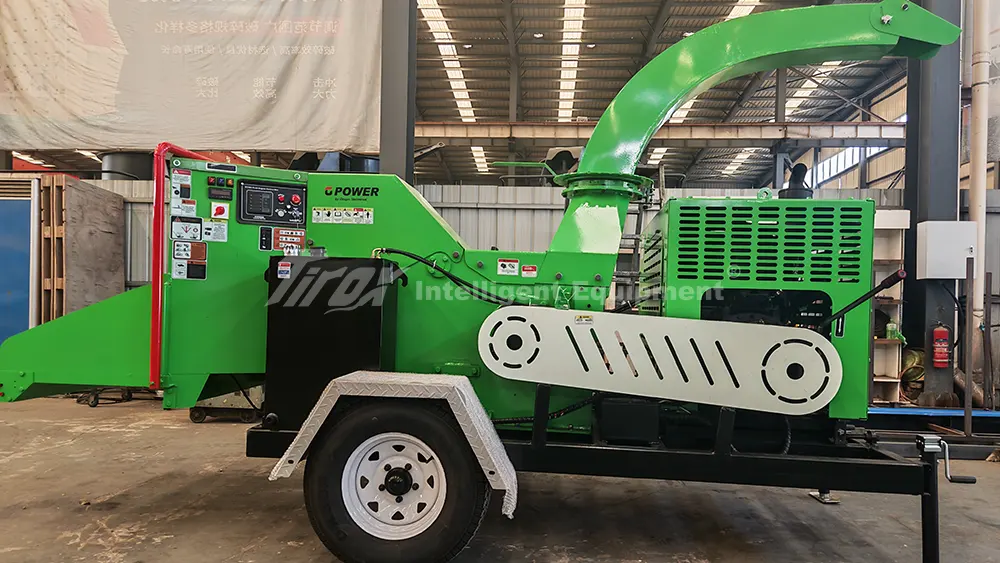You’re facing a mountain of woody debris, and you know a wood chipper is the solution. But with so many options available, how do you pick the right one that will effectively tackle your specific wood waste challenges?
Wood chippers come in various types, including tracked hydraulic, trailer-mounted, and general mobile configurations, each offering distinct benefits in terms of mobility, power, and operational efficiency, making them suitable for diverse applications from remote forestry to urban landscaping.
In my 22 years of manufacturing wood processing equipment at TIROX, I have had countless conversations with customers about finding the perfect machine. The choice of a wood chipper isn’t just about raw power; it’s about matching the machine’s design to your specific work environment and operational goals. Let’s explore the different types and what makes each beneficial.
What Are Tracked Hydraulic Wood Chippers?
You operate in tough terrains, perhaps deep in the forest or across uneven job sites, and moving heavy machinery is a constant headache. You need a chipper that can go wherever the work is, without needing elaborate transport solutions.
Tracked hydraulic wood chippers are self-propelled machines equipped with durable tracks and powerful hydraulic drives, offering unparalleled mobility and stability for processing wood directly in challenging, remote, or uneven environments like forests or large construction sites.

From my experience, especially in developing our specialized Tracked Horizontal Grinder, I know that getting the machine to the material is often as important as the chipping itself. Tracked hydraulic wood chippers are specifically designed for this purpose. They are built on a chassis with either rubber or steel tracks, which are hydraulically driven, giving them exceptional maneuverability and traction over rough ground where wheeled chippers would struggle. This robust design means they can climb slopes, navigate muddy conditions, and move directly through forests or over demolition debris, processing material right at the source. These machines typically feature powerful diesel engines, sometimes up to 197HP for models like ZSYL-1263, which provide the necessary power to drive both the chipping mechanism and the hydraulic tracks. They often incorporate advanced features such as hydraulic forced feeding systems and intelligent feed systems that monitor the processing load, automatically adjusting feed speed or even stopping to prevent clogging and optimize performance. This ensures maximum throughput and efficiency, especially when dealing with large, tough logs or mixed woody debris. The ability to operate directly where the material lies significantly reduces labor and transportation costs associated with moving raw wood to a central processing area. For large-scale forestry operations, land clearing companies, or biomass producers working in remote locations, a tracked chipper offers an indispensable blend of power, capacity, and go-anywhere mobility, making them a premium but highly effective choice. Such specialized configurations can add to the cost, for example, a customized track type might incur an extra cost of USD 5,523.
What Are The Benefits Of Trailer-Mount Wood Chippers?
You manage multiple job sites, perhaps for landscaping or municipal work, and constantly moving your equipment from one location to another is part of your daily routine. You need a chipper that simplifies transportation, allowing you to quickly set up and operate wherever needed.
Trailer-mount wood chippers are designed for easy towing behind vehicles, providing excellent on-road portability, which makes them highly beneficial for businesses requiring frequent relocation between various job sites, such as landscaping, tree care, or municipal applications.
In our discussions with customers, especially those with diverse work locations, the convenience of a trailer-mount chipper is often a key selling point. These chippers are built on a chassis with wheels and a standard towing hitch, allowing them to be easily connected to a truck or other suitable vehicle and transported on public roads. For maximum road legality and safety in some regions, specific models like our 1053, 1063, 1585, and 1585X can be equipped with a “road-worthy chassis” which includes features like electromagnetic brakes and a suspension system. This means you can drive directly to a client’s backyard, a park, or a construction site, chip the material on-site, and then quickly move to the next job. This flexibility is invaluable for businesses that don’t have a fixed processing plant. Trailer-mount chippers are generally powered by diesel engines, which are ideal for fieldwork where a stable electricity supply might not be available. They feature intuitive control levers for managing feeder functions (forward, reverse, stop), an intelligent feed system to prevent blockages, and smart control panels that display vital machine status like oil levels or running time, all contributing to smoother operations [1]. This type of chipper balances the need for robust processing capability with the practicality of easy, rapid deployment across numerous locations. For example, specific TIROX models like the ZSYL-600 or ZSYL-800 can be configured with mobile wheeled chassis, while larger units like the ZSYL-1263 can also be mobile, complete with features like a 2-meter feeding conveyor as an option.

What Is It Important To Know About Mobile Wood Chippers?
You’re looking for a wood chipper that offers flexibility, allowing you to work at different sites without being tied to a fixed location. You might be weighing options and wondering what truly defines a “mobile” wood chipper beyond just having wheels.
A mobile wood chipper is a versatile machine designed for portability, typically equipped with either wheels (trailer-mount) or tracks (tracked hydraulic) to facilitate movement between varying work locations, offering flexibility to process wood waste on-site, reduce transportation costs, and adapt to diverse operational needs.
When I discuss “mobile” wood chippers with clients, I emphasize that it’s a broad category, encompassing both the wheeled, trailer-mount units and the tracked, self-propelled machines we’ve just discussed. The core benefit of any mobile chipper, regardless of its specific traversal method, is its ability to bring the processing power directly to the raw material. This on-site processing capability drastically cuts down on the effort and cost associated with transporting bulky wood waste. Instead of hauling large branches and logs, you can chip them into smaller, denser, and more manageable pieces right where they fall. Mobile chippers also allow for varied operational strategies. For instance, a landscaping company might use a mobile chipper to process urban green waste, while a forestry operation might deploy a tracked mobile unit deep in the woods. These machines often come equipped with advanced features like hydraulic forced feeding systems to handle challenging wood materials, and intelligent feeding systems that monitor the load to automatically adjust processing speed, preventing jams and maximizing efficiency. Many are powered by robust diesel engines, providing the independence needed for fieldwork or remote locations without a stable power supply. The choice between a wheeled or tracked mobile chipper depends on the terrain you’ll encounter and your local transportation regulations for towing equipment. Ultimately, a mobile wood chipper is paramount for businesses that need adaptability, aiming to minimize labor, maximize material utilization, and ensure efficient wood waste management across varying job sites. You can explore how mobile chippers contribute to waste management on our Trash to Treasure: The Many Uses of Wood Chippers article.
Conclusion
Choosing the right wood chipper means understanding the distinct advantages of tracked hydraulic units for rugged terrain, trailer-mount models for easy road transport, and appreciating the overall flexibility of mobile chippers to match your operational demands effectively.






